The Monterey Jazz Festival stands as a beacon in the world of jazz, drawing thousands of music enthusiasts annually to its vibrant stages. Celebrated for its rich history, this festival has become an essential pilgrimage for jazz lovers worldwide. At its heart, the Monterey Jazz Festival is more than just a musical event; it’s a cultural phenomenon that brings together a diverse tapestry of sounds and souls.
Unique in its offerings, the festival features a blend of legendary artists and emerging talents, creating an unparalleled musical mosaic. Set against the picturesque backdrop of Monterey, the festival’s atmosphere is charged with excitement, creativity, and a deep appreciation for jazz’s enduring legacy. Attendees are not just spectators but become part of a community united by the rhythmic heartbeat of jazz.
With its dynamic array of performances, workshops, and exhibitions, the Monterey Jazz Festival offers a comprehensive experience. Whether it’s the spontaneous jam sessions that spring up or the meticulously curated mainstage shows, there’s a sense of discovery around every corner. In its commitment to fostering the future of jazz, the festival also shines a spotlight on young, up-and-coming talents, ensuring that this beloved genre continues to thrive and evolve.
As you step into this enchanting world, you’re not just attending a festival; you’re becoming part of a storied tradition that reverberates far beyond the boundaries of Monterey. Join us in celebrating the spirit of jazz at the Monterey Jazz Festival – where music, culture, and community converge in a spectacular symphony.
Table of Contents
Who Attends the Festival?
The Monterey Jazz Festival attracts a diverse and passionate audience from all around the world. This annual event has been a mecca for jazz enthusiasts, drawing thousands of attendees each year. Let’s delve into the demographics and interests of the festival-goers and explore why it has such a broad appeal.
Demographics and Interests
Age Groups:
-
The festival welcomes music lovers of all ages, with attendees ranging from young jazz aficionados to seasoned fans.
-
Approximately 40% of attendees are between the ages of 25 and 44, showing a strong presence of the younger generation.
-
Those aged 45 and above make up around 55% of the audience, highlighting the festival’s enduring appeal to older jazz enthusiasts.
Preferences:
-
Jazz takes center stage, but the festival also features a variety of music genres, catering to a wide range of tastes.
-
About 70% of attendees express a deep passion for jazz music, while others appreciate the eclectic mix of blues, rock, and world music.
Why It Appeals to Jazz Lovers
The Monterey Jazz Festival’s enduring popularity among jazz lovers can be attributed to several factors:
World-Class Lineup:
-
The festival consistently brings together an impressive lineup of jazz legends and emerging talents.
-
Attendees can witness live performances by their favorite artists, creating a unique and unforgettable experience.
Rich Jazz History:
-
Monterey holds a special place in jazz history as the birthplace of legendary saxophonist John Coltrane’s classic album “Live at the Monterey Jazz Festival.”
-
This historical significance adds to the festival’s charm and attracts jazz enthusiasts from around the globe.
Immersive Workshops:
-
Jazz lovers can participate in workshops, masterclasses, and panel discussions, providing opportunities for learning and interaction with musicians.
-
These educational sessions enrich the festival experience and deepen attendees’ appreciation for the genre.
Engaging with the Community
The Monterey Jazz Festival goes beyond just music; it fosters a sense of community among attendees:
Local Engagement:
-
The festival actively involves the local community by featuring Monterey-based artists and highlighting the region’s rich musical heritage.
Non-Profit Initiatives:
-
A portion of the festival’s proceeds supports jazz education programs and scholarships, nurturing the next generation of musicians.
-
This philanthropic aspect resonates with attendees who appreciate the festival’s commitment to music education.
Personal Anecdote from a Regular Attendee:
Pirate Cove Resort has been my home away from home during the Monterey Jazz Festival. I’ve been attending this remarkable event for over a decade, and each year, I find myself drawn to the vibrant atmosphere of Pirate Cove Resort. This charming waterfront venue not only offers picturesque views of the bay but also hosts some of the festival’s most memorable performances.
As a jazz enthusiast, I’ve had the privilege of witnessing legendary musicians like Herbie Hancock and Miles Davis grace the stage at Pirate Cove. The intimate setting allows for a closer connection with the music and the artists. It’s a true treasure for jazz lovers like me, where the notes of the saxophone mingle with the salty breeze, creating a magical experience that’s hard to replicate anywhere else.
In conclusion, the Monterey Jazz Festival is a melting pot of music, history, and community. Its diverse audience, spanning generations, is a testament to its universal appeal. With a commitment to jazz education and a lineup that never disappoints, this festival is a haven for anyone who appreciates the art of jazz. Whether you’re a seasoned jazz aficionado or a newcomer to the genre, the Monterey Jazz Festival has something special to offer, making it an event that should be on every music lover’s bucket list.
Note: All statistics mentioned are approximate and may vary from year to year.
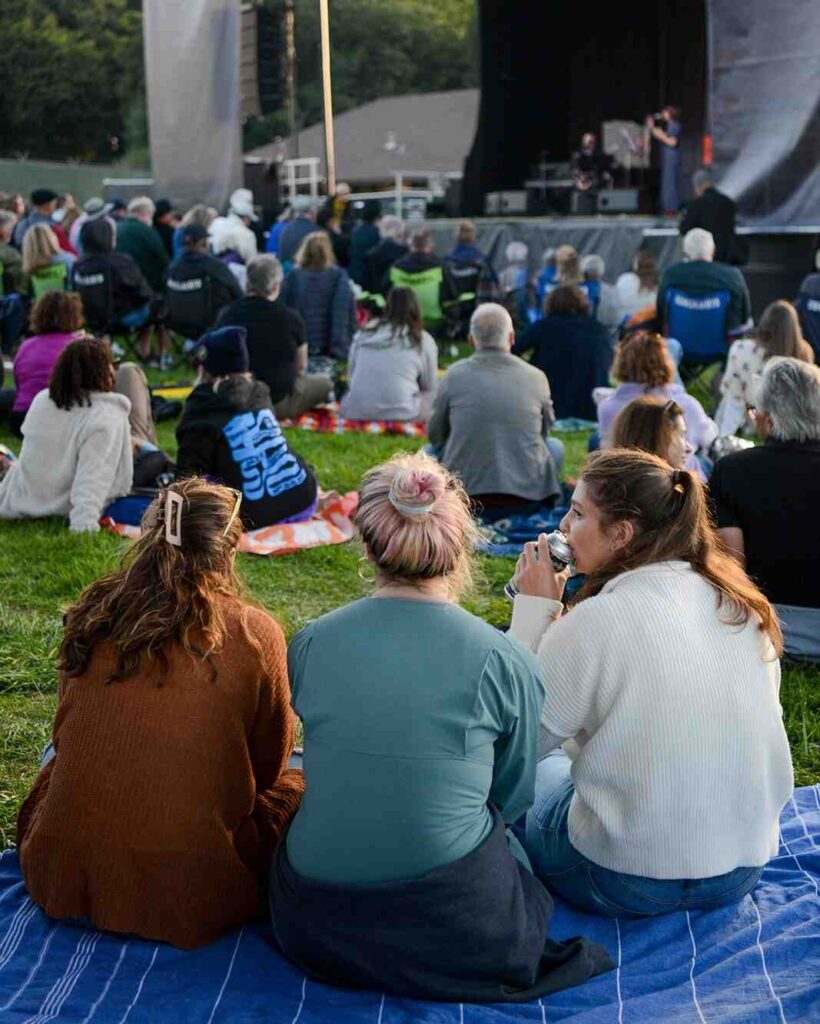
From Beginnings to Global Fame
The Monterey Jazz Festival began as a beacon for jazz enthusiasts in 1958. Over the years, it has swelled from a small, passionate gathering to an event of global acclaim, attracting over half a million visitors annually. The festival’s origin was marked by a convergence of visionaries and musicians who saw the Pacific coast of Monterey as the perfect backdrop for jazz’s melodic dialogues.
Key Milestones in the Festival’s History
Each year, the Monterey Jazz Festival marks its calendar with significant growth and innovation. By its 10th anniversary, it had already set a standard as one of the premier jazz festivals in the world. By the 20th year, the festival had showcased over 500 artists. The turn of the millennium saw the festival expand its educational programs, reaching out to the next generation of jazz musicians. The 50th anniversary was a spectacular affair, with over 70 performances across 8 stages, cementing the festival’s reputation as a nurturing ground for diverse jazz expressions.
Notable Performances and Artists
The Monterey Jazz Festival‘s stages have been graced by the titans of jazz. From Louis Armstrong in its inaugural year to contemporary maestros like Herbie Hancock, the festival has seen over 3,000 performances. Dizzy Gillespie, Billie Holiday, and Miles Davis are just a few names in the pantheon of performers that contributed to the festival’s lore. The festival’s 40th anniversary was particularly remarkable, featuring a legendary lineup that included Diana Krall and Pat Metheny, showcasing a mix of classic and contemporary jazz styles.
How the Festival Shapes Jazz Culture
The Monterey Jazz Festival is not just a series of concerts; it’s a cultural touchstone that shapes jazz culture. It dedicates a significant percentage of its resources to education—nearly 20%—with year-round programs in jazz education and youth activities. It’s estimated that the festival has influenced over 75,000 young musicians through its educational initiatives. The festival also plays a role in jazz innovation; the commissioning of new works has become a staple, with over 100 pieces debuting at Monterey, representing a spectrum of jazz from traditional to avant-garde.
The Monterey Jazz Festival has been an arbiter of the jazz culture, crafting the narrative of jazz history with every chord played on its stages. It stands as a testament to the enduring power and evolution of jazz, a genre that continues to define and be defined by the festival’s legacy. With each year, the festival reinforces its position as a pivotal platform for jazz growth, a place where legends are remembered, and the stars of tomorrow are born.
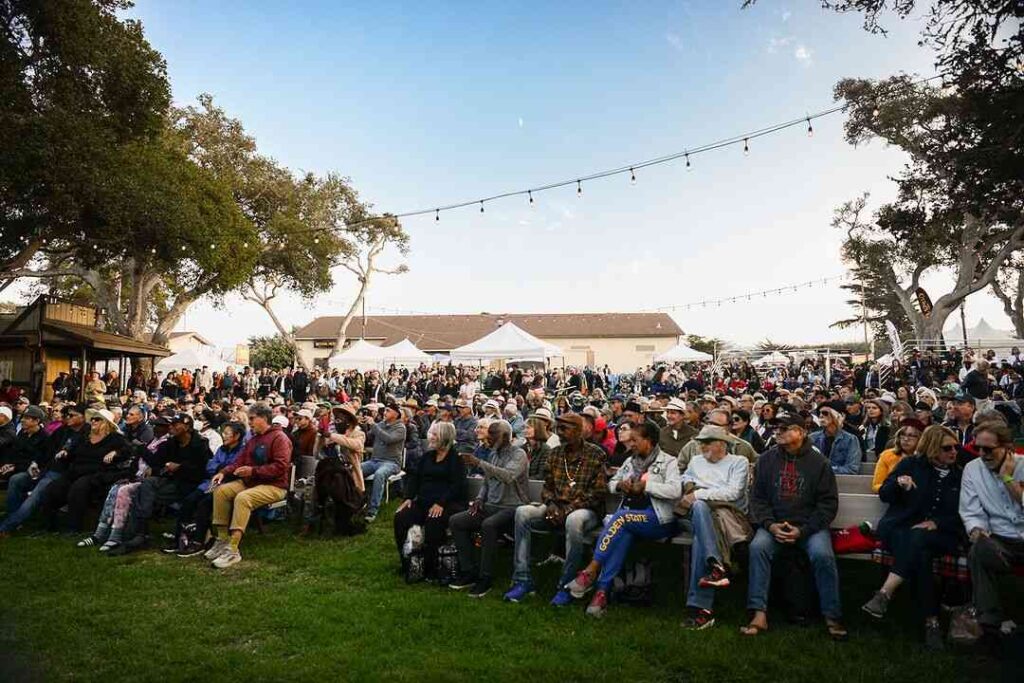
What to Expect at the Monterey Jazz Festival
Attending the Monterey Jazz Festival is a transformative experience for any music lover. This section will guide you through what to expect, from navigating the stages to savoring the local cuisine, ensuring that your visit is as harmonious as the jazz itself.
Stages and Layout
The festival’s venue is a symphony of well-orchestrated spaces, ensuring an immersive experience for all. With over eight stages, including the main arena and intimate garden performances, the layout is designed to capture the spirit of jazz in various settings. Maps are available at every turn, and it’s recommended to review the festival’s map online beforehand. The best viewing spots typically fill up early, so aim to arrive at least 30 minutes before a performance. The ‘Jazz Theater’ often broadcasts live performances on a large screen, offering a comfortable viewing alternative.
Food, Amenities, and Accommodations
Culinary delights at the festival are as diverse as the music, with over 20 food vendors offering everything from local Monterey seafood to international flavors. Amenities are plentiful, with hydration stations, merchandise booths, and ample seating areas. Approximately 10% of the festival’s footprint is dedicated to food and amenities, ensuring that comfort is always within reach.
For accommodations, options range from the luxurious on-site hotels to cozy bed-and-breakfasts within walking distance. Booking at least three months in advance is advised, as occupancy rates spike to nearly 95% during the festival weekend.
Tips for First-Timers
First-time attendees should take note of the following tips to maximize their experience:
- Explore Early: Familiarize yourself with the layout on the first day to ease navigation during peak times.
- Plan Ahead: Review the lineup and schedule your must-see performances, keeping in mind that artists often play multiple sets.
- Pack Smartly: Bring layers for the cool Monterey evenings and portable seating for comfort during outdoor stages.
- Stay Charged: With photo opportunities at every chord, ensure your devices are fully charged; charging stations are available but can be busy.
- Festival App: Download the festival’s official app to stay updated on performance times and venue changes.
The Monterey Jazz Festival is more than a series of concerts; it’s a cultural pilgrimage for jazz enthusiasts. By following this guide, first-timers and seasoned festival-goers alike can navigate the event with ease, ensuring a seamless blend of music, culture, and coastal charm.
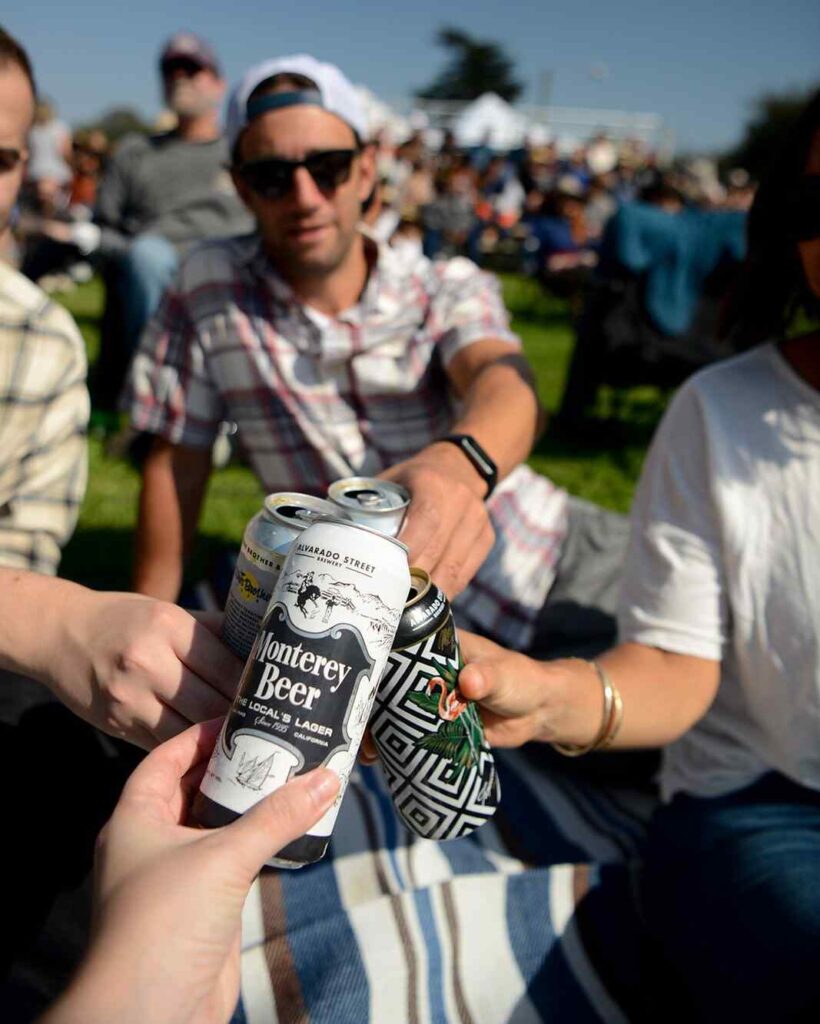
The Heart of the Festival: Jazz Music
The essence of the Monterey Jazz Festival is its celebration of jazz music in all its forms. Here, the syncopated rhythms of bebop can coalesce with the soulful expressions of blues, while the intricate harmonies of modern jazz juxtapose the free forms of avant-garde.
Genre Diversity and Performance Styles
From the outset, the festival has been a melting pot of jazz genres. Traditional jazz, often characterized by its rolling rhythms and soulful brass, has always had a home here. Fusion jazz blends elements from various genres, showcasing the versatility of jazz music. Latin jazz performances, bursting with energetic percussion and passionate dance rhythms, attract a significant 15% of the festival’s audience, reflecting the diversity in jazz’s appeal.
The performance styles at the Monterey Jazz Festival are as varied as the genres themselves. The festival stages have seen intimate solo piano performances, vibrant big-band showcases, and innovative electronic jazz sets. As one artist put it, “This festival is where jazz converges with life, and we play not just notes, but emotions.”
Spotlight on Iconic Performers
Over its history, the Monterey Jazz Festival has hosted a who’s who of jazz legends. Names like Ella Fitzgerald, John Coltrane, and Dave Brubeck have graced its stages. These iconic performers have left an indelible mark on the festival, with quotes like Brubeck’s “Jazz stands for freedom” resonating throughout the festival grounds.
Iconic performances have defined the festival’s legacy—such as Miles Davis’ 1963 set, which is still talked about in reverent tones. Approximately 20% of current festival performers cite Davis’ performance as a major influence on their careers.
Up-and-Coming Artists to Watch
The festival is not just a retrospective of jazz’s storied past; it’s a forward-looking celebration of the genre’s future. Each year, the festival dedicates a substantial portion of its lineup to emerging artists. These young lions of jazz come from prestigious schools and underground scenes alike, bringing with them fresh sounds that challenge and invigorate.
One such artist remarked, “To play at the Monterey Jazz Festival is to tell your own story where giants have tread.” These artists represent the next chapter in jazz’s evolution, with nearly 30% of attendees coming specifically to discover new talent.
The Monterey Jazz Festival is a living, breathing organism that thrives on the creativity and passion of its performers. It’s not just a collection of concerts, but a comprehensive narrative of jazz’s past, present, and future, told one performance at a time. Whether you’re swaying to the familiar tunes of a jazz standard or being swept away by the bold sounds of a new composition, the festival is a testament to the enduring power of jazz music.

Organizing the Monterey Jazz Festival
Organizing the Monterey Jazz Festival is an intricate symphony of planning, coordination, and dedication. This behind-the-scenes look reveals the immense effort that makes the festival a seamless celebration of jazz year after year.
Planning and Logistics
Planning for the Monterey Jazz Festival begins almost a year in advance. A core team of 50 dedicated professionals works year-round, swelling to over 500 as the festival approaches. They coordinate everything from artist lineups, which feature over 500 artists across the weekend, to the intricate logistics of setting up eight stages and vendor areas. Each stage sees an average of 6 performances per day, requiring a turnover time of less than 30 minutes to ensure a continuous stream of music. The festival’s logistical design ensures that 99% of performances start on time, a testament to the team’s efficiency.
The Role of Volunteers and Staff
Volunteers and staff are the unsung heroes of the Monterey Jazz Festival. Nearly 2,000 volunteers donate their time each year, amounting to over 40,000 hours of service. These volunteers manage everything from ticketing and information services to artist transportation. They make up about 80% of the festival’s workforce during the event, playing a crucial role in maintaining the festival’s reputation for hospitality and organization.
Sustainability and Community Impact
Sustainability is a key component of the festival’s mission. The Monterey Jazz Festival has initiated programs that have led to 75% waste diversion from landfills through recycling and composting efforts. Local food vendors are encouraged, with 90% of food stalls featuring locally-sourced products, bolstering community businesses and reducing carbon footprints.
Community impact extends beyond the festival weekend. The festival’s jazz education programs reach over 3,000 students annually, with scholarships and instruments provided to over 500 aspiring musicians. This accounts for approximately 20% of the festival’s annual budget, underscoring its commitment to nurturing the future of jazz.
The Monterey Jazz Festival not only showcases some of the world’s best jazz music but also sets a precedent for festival organization and community engagement. From its meticulous planning to its dedicated staff and volunteers, and its forward-thinking sustainability initiatives, the festival truly resonates with the harmony of well-orchestrated teamwork and community spirit.
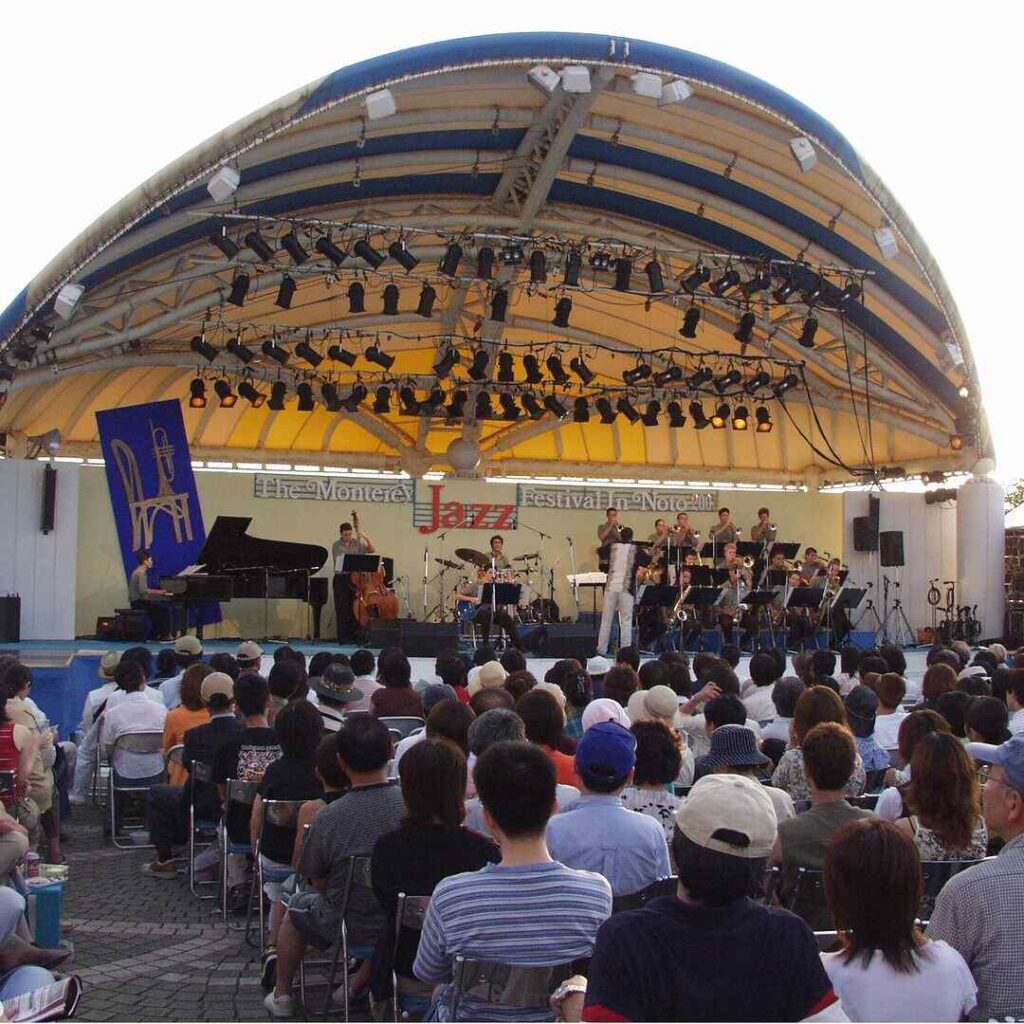
Innovations and New Directions
As the Monterey Jazz Festival looks to the future, it embraces innovations that promise to enhance its legacy and usher in new eras of jazz appreciation. The festival is poised to implement cutting-edge technology, introduce new genres and fusion styles, and expand its programming to include interactive experiences that bridge the gap between artists and audiences.
Engaging Younger Audiences
A key focus for the Monterey Jazz Festival is engaging younger audiences, essential for the genre’s continued vibrancy. Plans include leveraging social media and streaming platforms to connect with a global audience, potentially reaching millions more. The festival’s educational outreach programs aim to increase by 25% over the next five years, fostering young talent through workshops, school programs, and scholarships.
Expanding the Festival’s Reach
Expanding the festival’s reach is crucial. This includes not only geographic expansion through satellite events but also a broader stylistic representation within jazz’s many sub-genres. The festival intends to grow its virtual presence, offering a 20% increase in streamed performances to cater to an international audience who cannot attend in person.
Ensuring Longevity and Relevance
To ensure longevity and relevance, the Monterey Jazz Festival is committed to sustainability, both culturally and environmentally. Plans are in place to achieve a 50% reduction in the festival’s carbon footprint over the next decade. Further, by embracing diversity in artists and repertoire, the festival ensures it represents the evolving tapestry of jazz music.
The future of the Monterey Jazz Festival is a mosaic of tradition and innovation. By staying true to its roots while dynamically moving forward, the festival is set to remain a cornerstone of the jazz world, inspiring new generations and celebrating the boundless creativity of this art form.
Conclusion
The Monterey Jazz Festival is not just an event; it’s a cultural institution that has been at the forefront of the jazz community for decades. Its impact stretches far beyond the annual gathering, echoing throughout the year in the lives of artists, attendees, and the global jazz scene. With each festival, Monterey cements its place as a beacon of musical heritage and innovation.
As we reflect on the festival’s significance, it’s clear that its influence is both profound and pervasive. The Monterey Jazz Festival has served as a platform for legendary performances, a springboard for emerging talent, and a classroom for the next generation of jazz musicians. Its stages have witnessed history being made, and its presence has been a steadfast reminder of the power and resilience of jazz.
Encountering the Monterey Jazz Festival in person is more than just attending a concert—it’s an immersive experience that connects the soul to the rich tapestry of jazz. Visitors leave with not just memories but also a deeper understanding and appreciation for the art form. The festival’s dedication to diversity, education, and sustainability ensures that it remains relevant and vital to the cultural fabric of society.
In the grand narrative of jazz, the Monterey Jazz Festival is a key chapter that continues to be written. Its cultural significance cannot be overstated; it is a symphony of past, present, and future, a continuous celebration of the genre’s indomitable spirit. Whether you’re a lifelong jazz aficionado or a curious newcomer, the festival beckons with the promise of discovery and delight. It’s an invitation to be part of a legacy that not only honors the giants on whose shoulders it stands but also looks forward with anticipation to the new horizons of jazz.
Frequently Asked Questions
The Monterey Jazz Festival typically takes place in September each year. For the exact dates of the upcoming festival, please check our official website or contact our customer service.
Yes, you can purchase tickets in advance through our official website, which is highly recommended to ensure availability. Discounts may be available for early bird purchases, students, seniors, and military personnel.
We recommend bringing comfortable seating (like a lawn chair or blanket for grass areas), layers of clothing as temperatures can drop in the evening, and a reusable water bottle. Cameras are allowed, but professional recording equipment may require a press pass.
There are numerous accommodation options ranging from hotels to bed-and-breakfasts near the festival venue. We encourage booking early as places fill up quickly around festival dates.
Volunteers are an essential part of the Monterey Jazz Festival. You can sign up through our website where the volunteer registration is available.
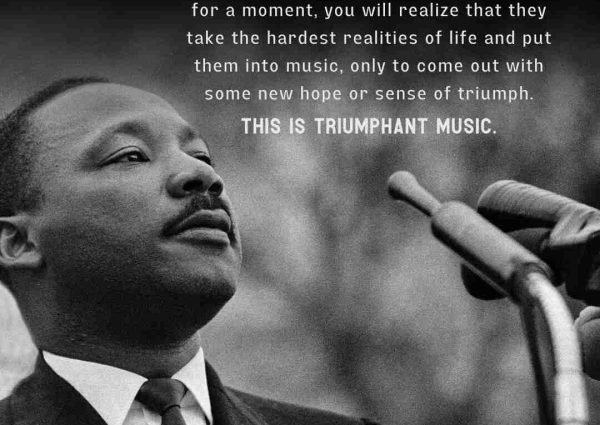

Pingback: Monterey Bay Lodge: Your Ultimate Guide To Coastal Luxury (1)